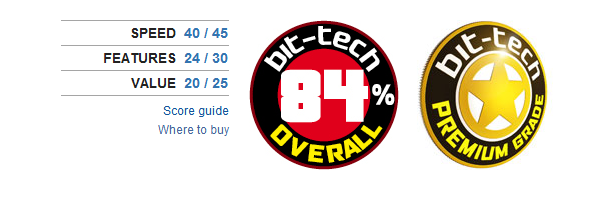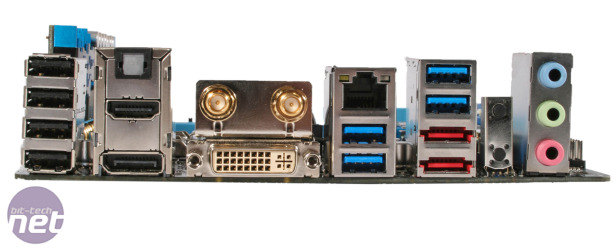Performance Analysis
Both boards steamed through the first of our battery of tests, which involves the manipulation of a number of large digital photos. Of the two, the Asus board came out on top, with a stock speed score of 1,824 compared to the 1,775 of the ASRock board. Interestingly these scores were some of the slowest we've seen from Z77 boards - clearly you do have to deal with a small performance drop if you want to go down the mini-ITX route.The gap between the two contenders widened in our intensive video encoding test, with the Asus pulling out a lead of 162 points; that’s a full five per cent better than the ASRock board. This piqued our interest a little, as five per cent is a relatively large gap, given that we used the test gear across both of the boards. Under closer inspection we found that the ASRock board wasn’t boosting our test Intel i7-3770K as hard as the Asus board was - we were only seeing peak frequencies around the 3.7GHz area, rather than the 3.9GHz that the Z77-I was capable of.
Intriguingly, we didn’t see any daylight between the two boards in our multi-tasking test, despite the turbo boost situation, meaning that once the dust had settled the Asus board had an overall lead of 70 points.
Next in line was our games testing, so we booted up Arma II to see what the two diminutive boards were capable of. Again we saw a measurable gap between the boards, with the Asus eeking out a 6fps lead in terms of minimum frame rates. This was a consistent gap, but the fact that both boards were returning minimums in the area of 120fps means that you’d probably have to be plugged into the matrix to actually notice it in everyday use.
Once overclocked, things evened up between the two boards to a degree, with the ASRock even marginally outperforming the Asus board in our video encoding test. The Z77-I still had enough in the tank to end up ahead of the cheaper board overall however, meaning that there is a smidgen extra latent performance in the Asus board with all other things being equal.
Gaming too saw the Asus board maintain its lead; in fact it actually increased it by a small amount, nipping 9fps ahead of the ASRock board with a minimum frame rate of 146fps. This was a gap of 6.5 per cent compared to the 4.8 per cent gap we saw when both boards were running with their out-of-the-box settings.
Conclusion
The fact that both of these boards are good speaks volumes about how far the world of mini-ITX boards has come in the last few years - both are reliable, overclock well and have a fully stocked cupboard of features. Even so, the Asus board rolls out the clear winner in our testing, not just in terms of performance, but also its layout, which will have a bearing on how easy it is to actually build a system around.You do pay for this privilege of course, and for some the £30 premium may be just a little more than they’re willing to pay, given that the ASRock is a competent board with many of the same features. Some may even argue that the £30 saved will get you more spent on other components, and they’d be right in certain situations. As a result, what you take away from this will depend on the build you have in mind, but either way, it’s worth seriously considering a mini-ITX board for your next build.
Asus P8Z77-I Deluxe

ASRock Z77E-ITX
-
Speed38 / 45
-
Features21 / 30
-
Value20 / 25


MSI MPG Velox 100R Chassis Review
October 14 2021 | 15:04












Want to comment? Please log in.